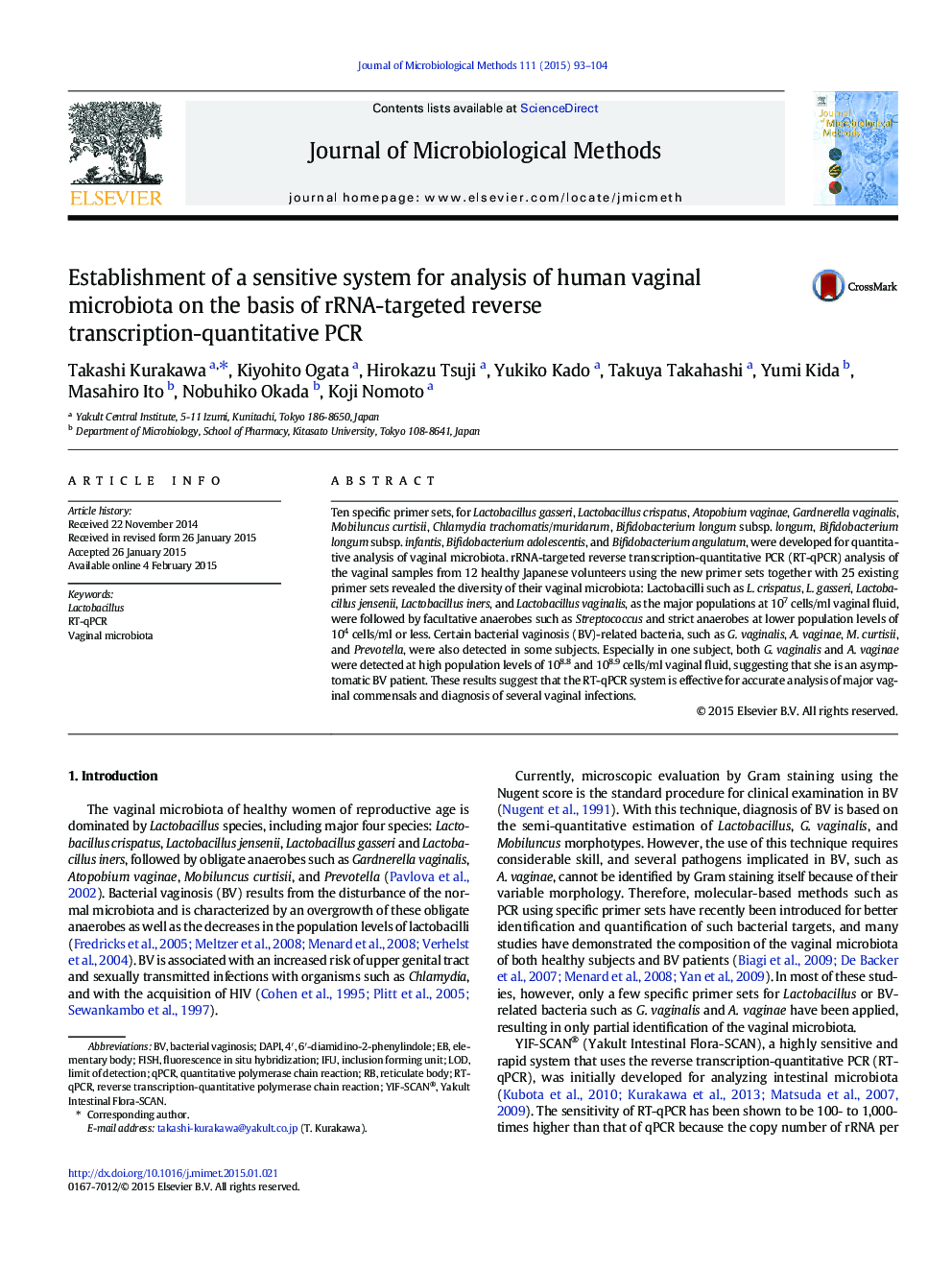| Article ID | Journal | Published Year | Pages | File Type |
|---|---|---|---|---|
| 2089862 | Journal of Microbiological Methods | 2015 | 12 Pages |
•The RT-qPCR system is effective for accurate analysis of major vaginal commensals.•The normal vaginal microbiota consists of Lactobacillus as the predominant populations.•The normal vaginal microbiota also contains several anaerobes including BV-related bacteria.
Ten specific primer sets, for Lactobacillus gasseri, Lactobacillus crispatus, Atopobium vaginae, Gardnerella vaginalis, Mobiluncus curtisii, Chlamydia trachomatis/muridarum, Bifidobacterium longum subsp. longum, Bifidobacterium longum subsp. infantis, Bifidobacterium adolescentis, and Bifidobacterium angulatum, were developed for quantitative analysis of vaginal microbiota. rRNA-targeted reverse transcription-quantitative PCR (RT-qPCR) analysis of the vaginal samples from 12 healthy Japanese volunteers using the new primer sets together with 25 existing primer sets revealed the diversity of their vaginal microbiota: Lactobacilli such as L. crispatus, L. gasseri, Lactobacillus jensenii, Lactobacillus iners, and Lactobacillus vaginalis, as the major populations at 107 cells/ml vaginal fluid, were followed by facultative anaerobes such as Streptococcus and strict anaerobes at lower population levels of 104 cells/ml or less. Certain bacterial vaginosis (BV)-related bacteria, such as G. vaginalis, A. vaginae, M. curtisii, and Prevotella, were also detected in some subjects. Especially in one subject, both G. vaginalis and A. vaginae were detected at high population levels of 108.8 and 108.9 cells/ml vaginal fluid, suggesting that she is an asymptomatic BV patient. These results suggest that the RT-qPCR system is effective for accurate analysis of major vaginal commensals and diagnosis of several vaginal infections.
